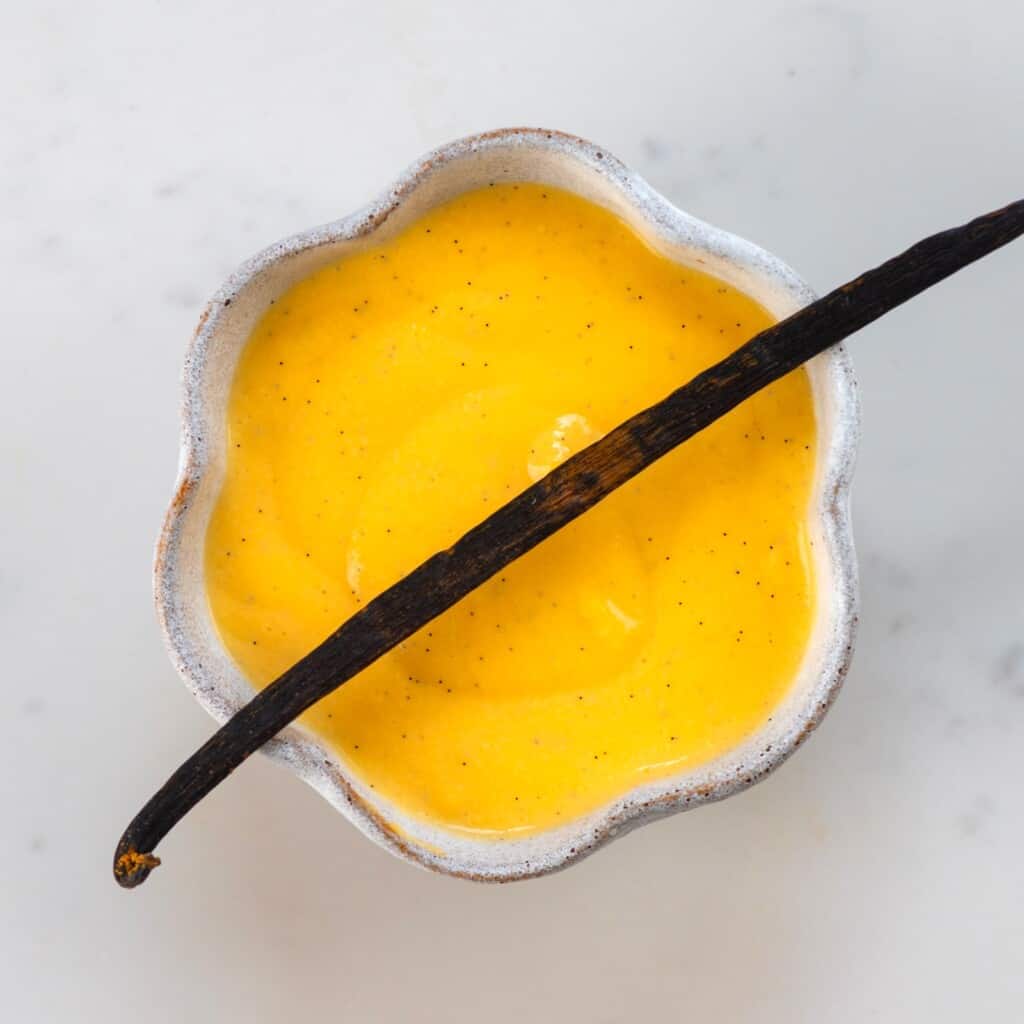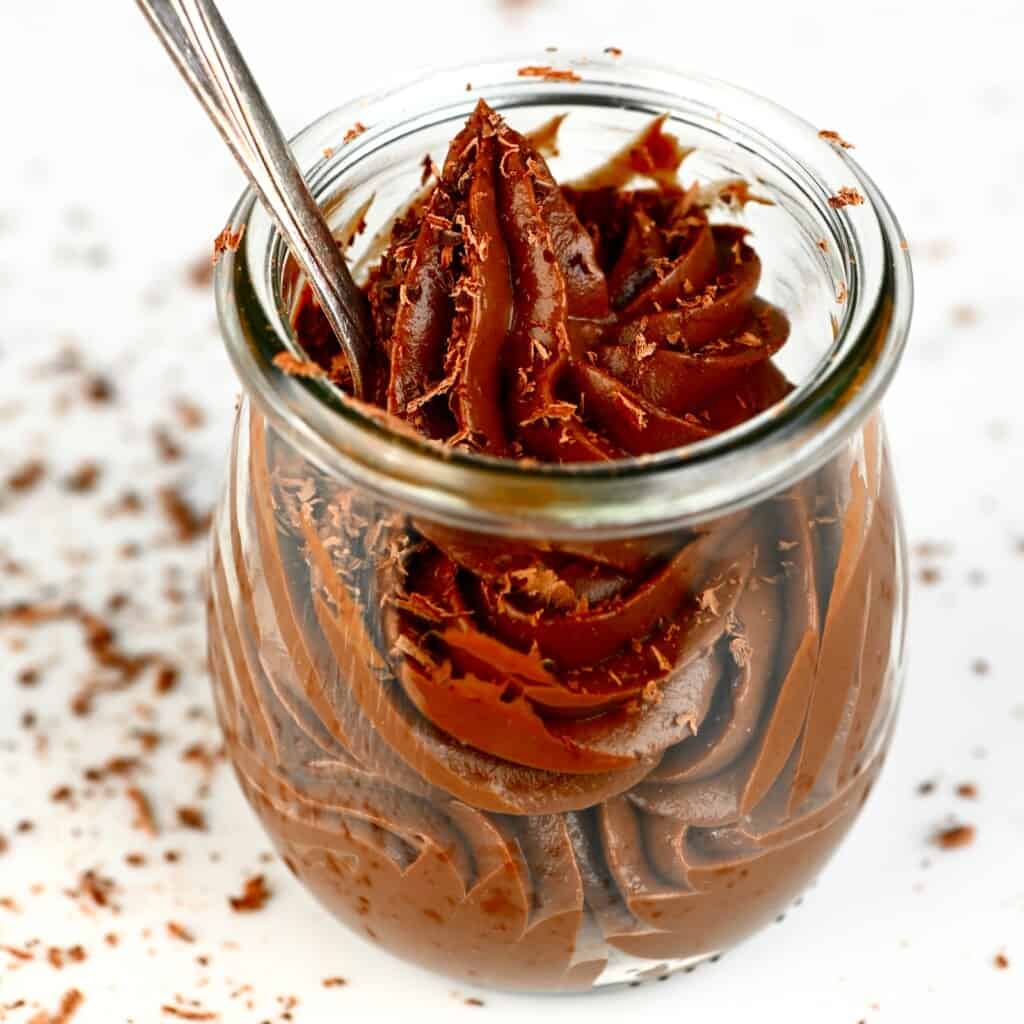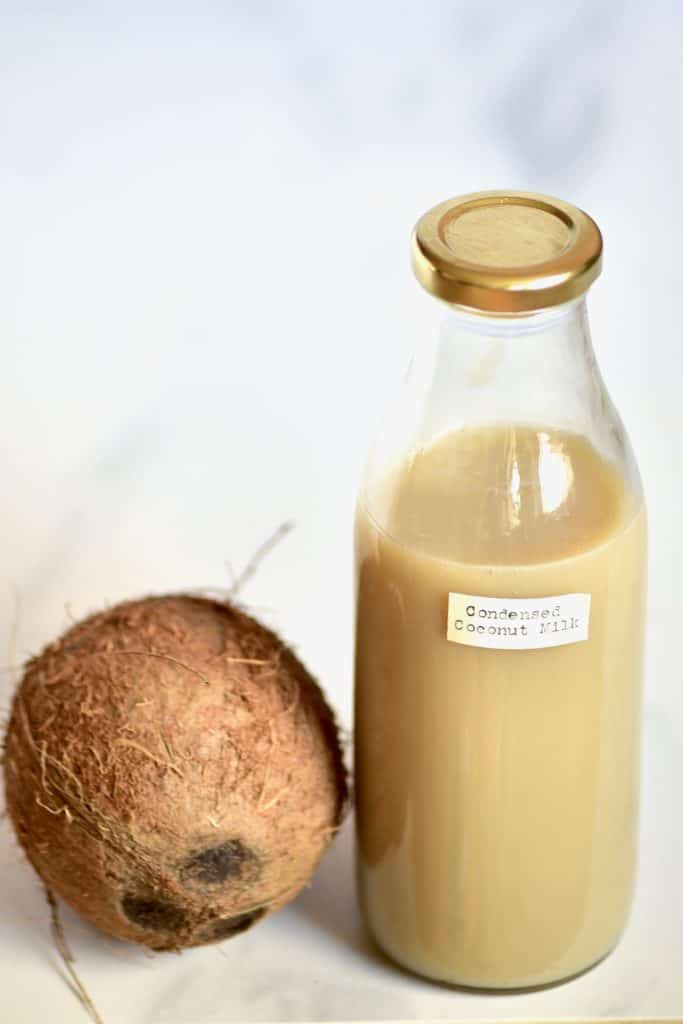This post may contain affiliate links. Please read our disclosure policy.
How to make light, fluffy, and crisp choux pastry (pâte à choux) every time (with Tons of top tips and troubleshooting). This recipe takes just 7 ingredients (water and salt included) and just 10 minutes of hands-on preparation, and you are on your way to tons of delicious pastries!
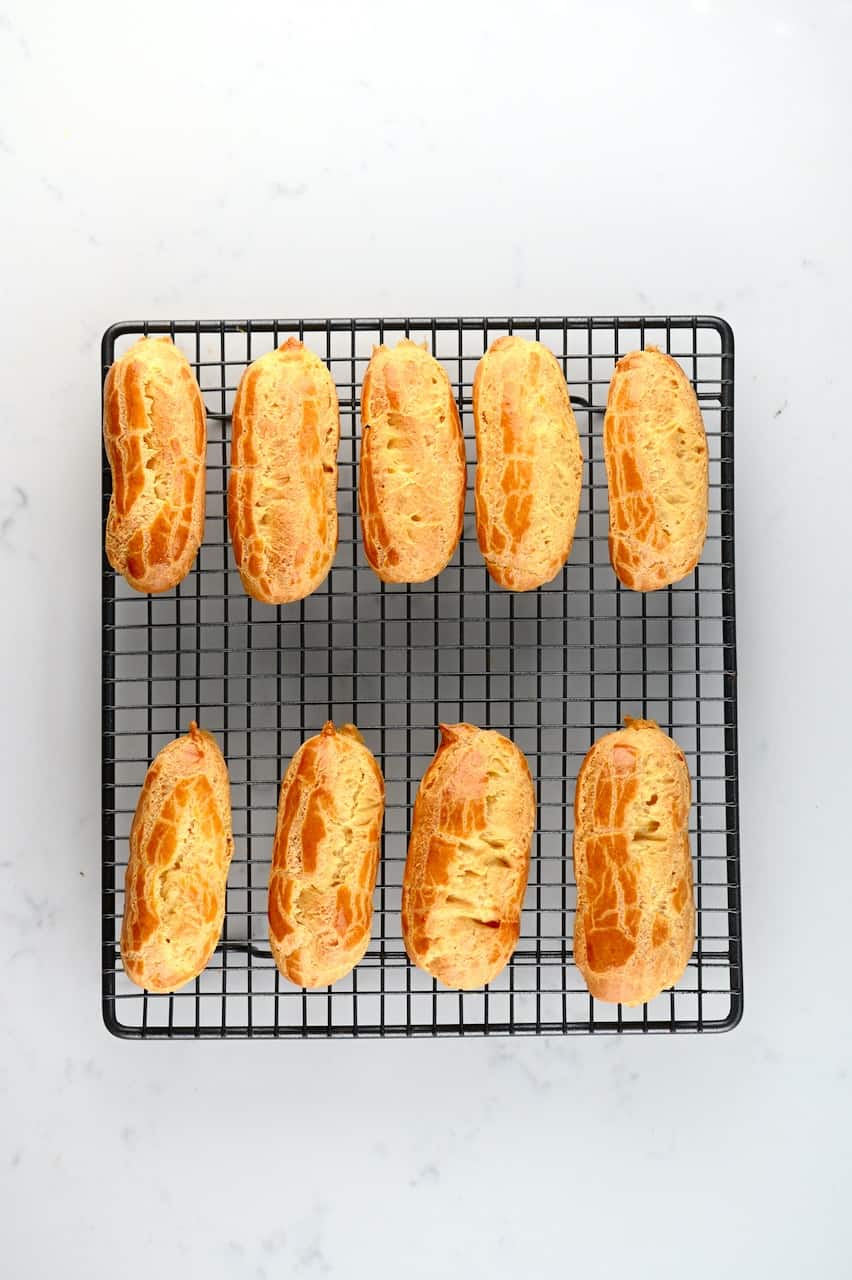
Choux pastry (pronounced like ‘shoo’), also referred to as pâte à choux, is the basis of tons of delicious recipes. The dough itself is made up of just a few simple ingredients, including flour, butter, eggs, and water. The process consists of cooking the ingredients on the hob before beating in eggs until you achieve a smooth and shiny dough.
Once you master this technique, then you are on your way to countless delicious pastries to impress friends and family: cream puffs, eclairs, savory choux buns, even a Parisienne gnocchi. The list is plentiful, with some of the best desserts that I know of.
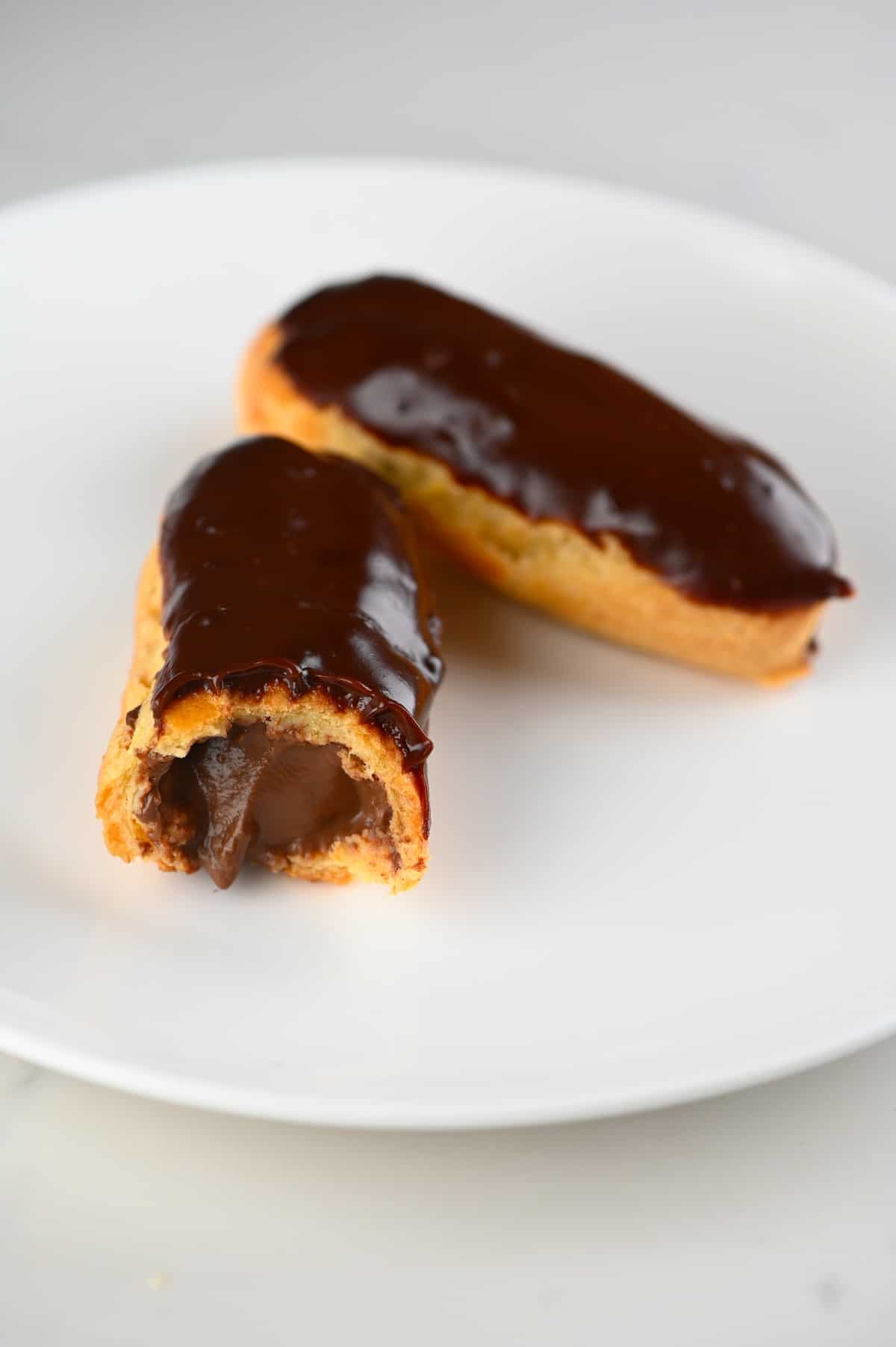
Unfortunately, choux pastry (pate a choux) has also received a reputation for being particularly difficult to master. The truth is, the process itself is actually remarkably simple. However, there are definitely tips and tricks to perfecting this dough time and time again.
Want to save this recipe?
What Makes Choux Pastry Different?
Unlike most pastry recipes, that are folded or kneaded, this dough is cooked on a stovetop to prepare the dough. It doesn’t rely on a chemical raising agent to become light and puffed up. Instead, this pastry dough uses the air and moisture trapped within the dough to steam and rise.
The results are a pastry that contains a crisp, light outer shell with a soft center with large air-pockets, ready to fill.
How To Make Choux Pastry
As I said above, there are several top tips for preparing this dough perfectly every time. Rather than overwhelming you with them all upfront, I’ve included comprehensive (or as much as I know, anyway) step-by-step instructions with all the tips included as you go.
To begin, gather your ingredients.
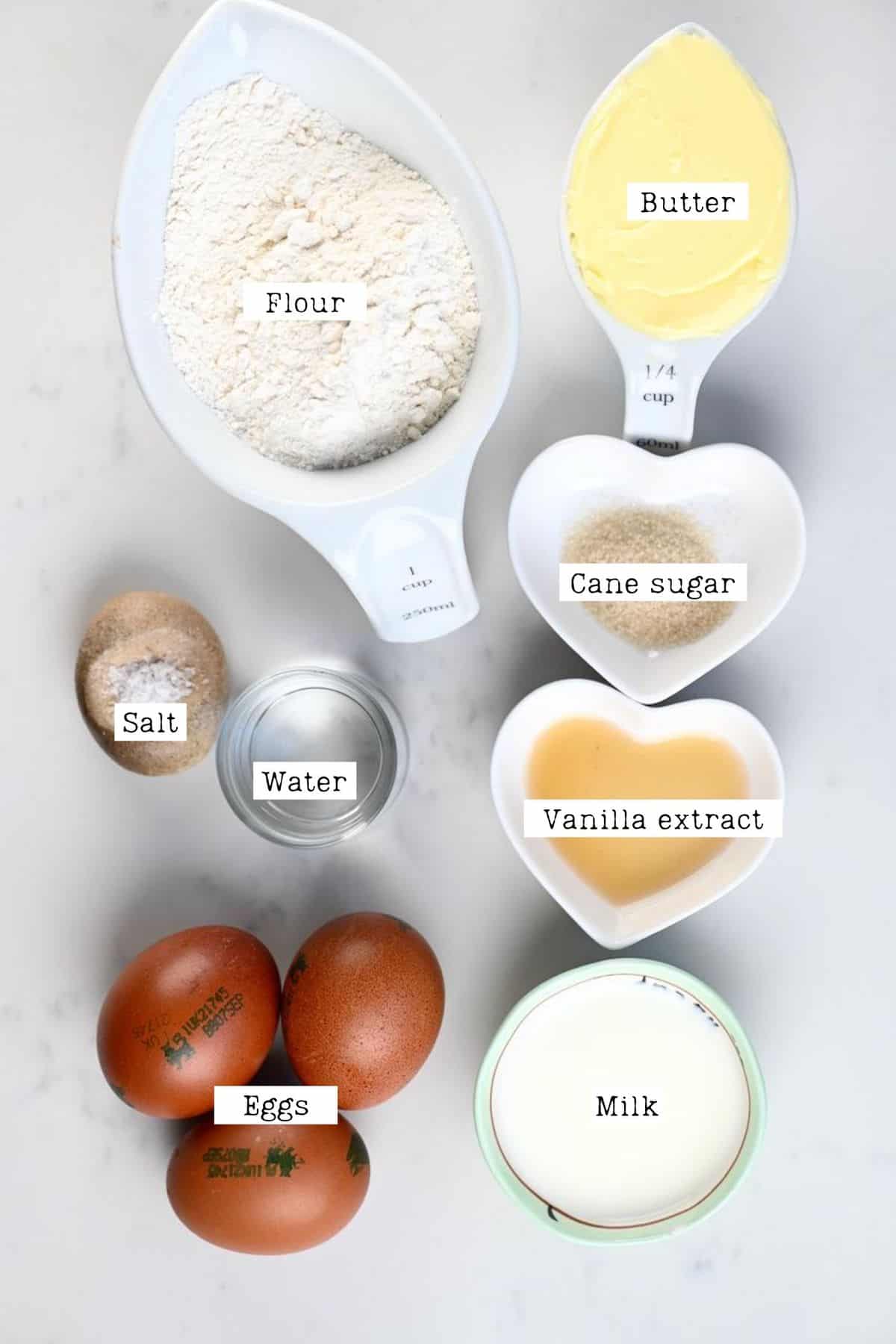
In a large saucepan, add the water, milk, butter, sugar, and salt. Heat them up over medium heat, occasionally stirring, until the butter is melted and the sugar/salt are completely dissolved (otherwise your pastry can end up cracking).
Top Tip: It’s best to chop the butter up into tiny pieces so that it melts quicker. The aim is to melt the butter and dissolve the sugar/salt before the mixture starts boiling so that you don’t allow too much of the water to evaporate, which can negatively affect your dough as you’re losing steam.
Once the butter is melted, bring the mixture to a boil over high heat and then remove from the heat, keeping it on.
Add the sifted flour to the mixture in one go and beat until smooth and lump-free, then place the pot back on the heat and continue to mix until mixture forms a cohesive dough that pulls away cleanly from the sides of the pan, at that point stop beating the mixture immediately.
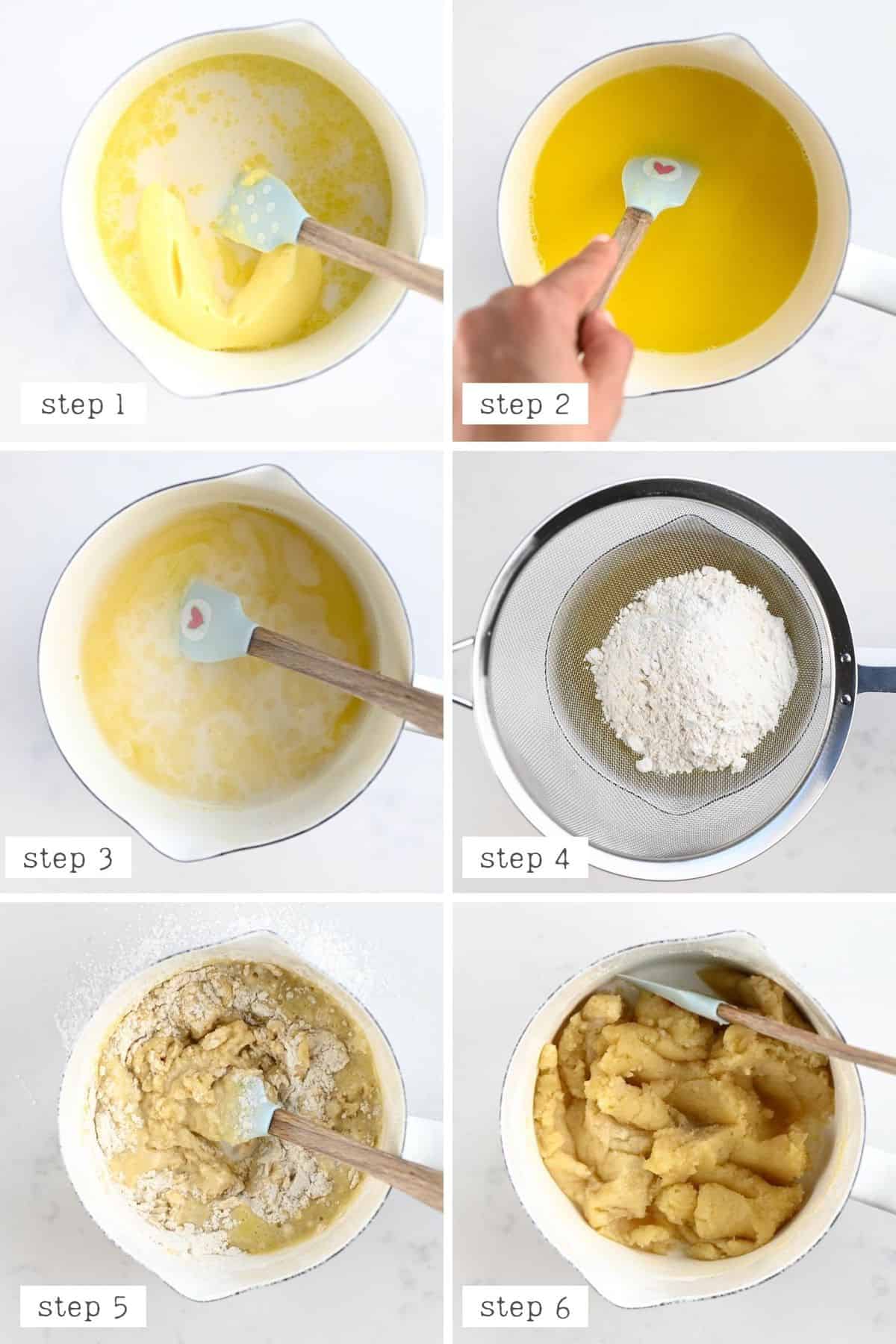
Top Tip: There are several things to look out for to know that it’s ready. There is often a thin film/crust of mixture on the bottom of the pan. Another test is the ‘spoon test.’ Place a spoon in the center of the dough. If it stays in place, upright, then it’s ready. If it falls over, then your dough is too liquidy.
Once ready, transfer the dough to a bowl and set aside for 10 minutes to allow it to cool.
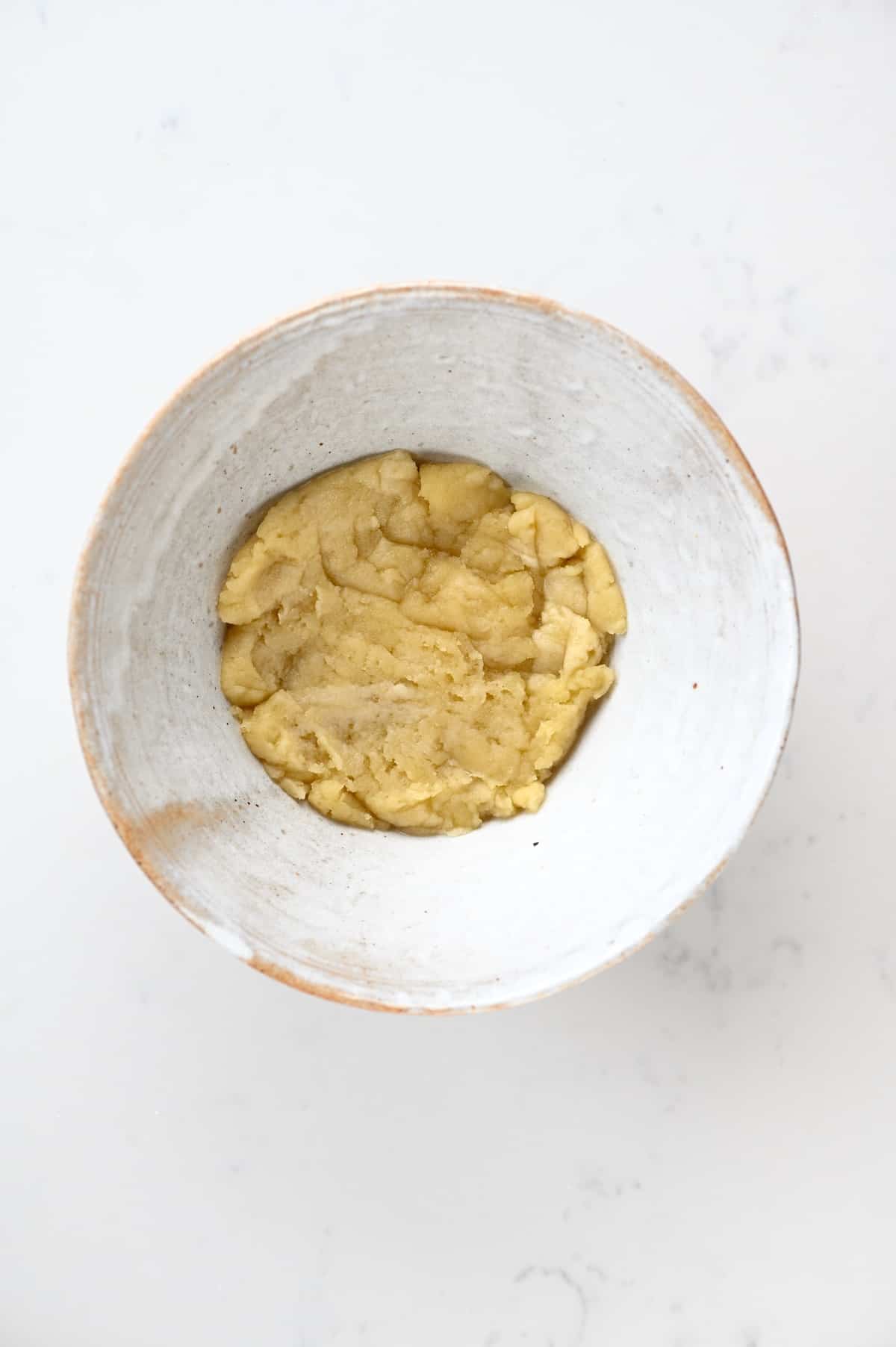
Top Tip: It’s easiest to do this by spreading it out across a wide surface space to cool faster. You can either spread it out on the inside of the bowl or over a wide baking sheet.
As the dough cools, thoroughly beat the eggs.
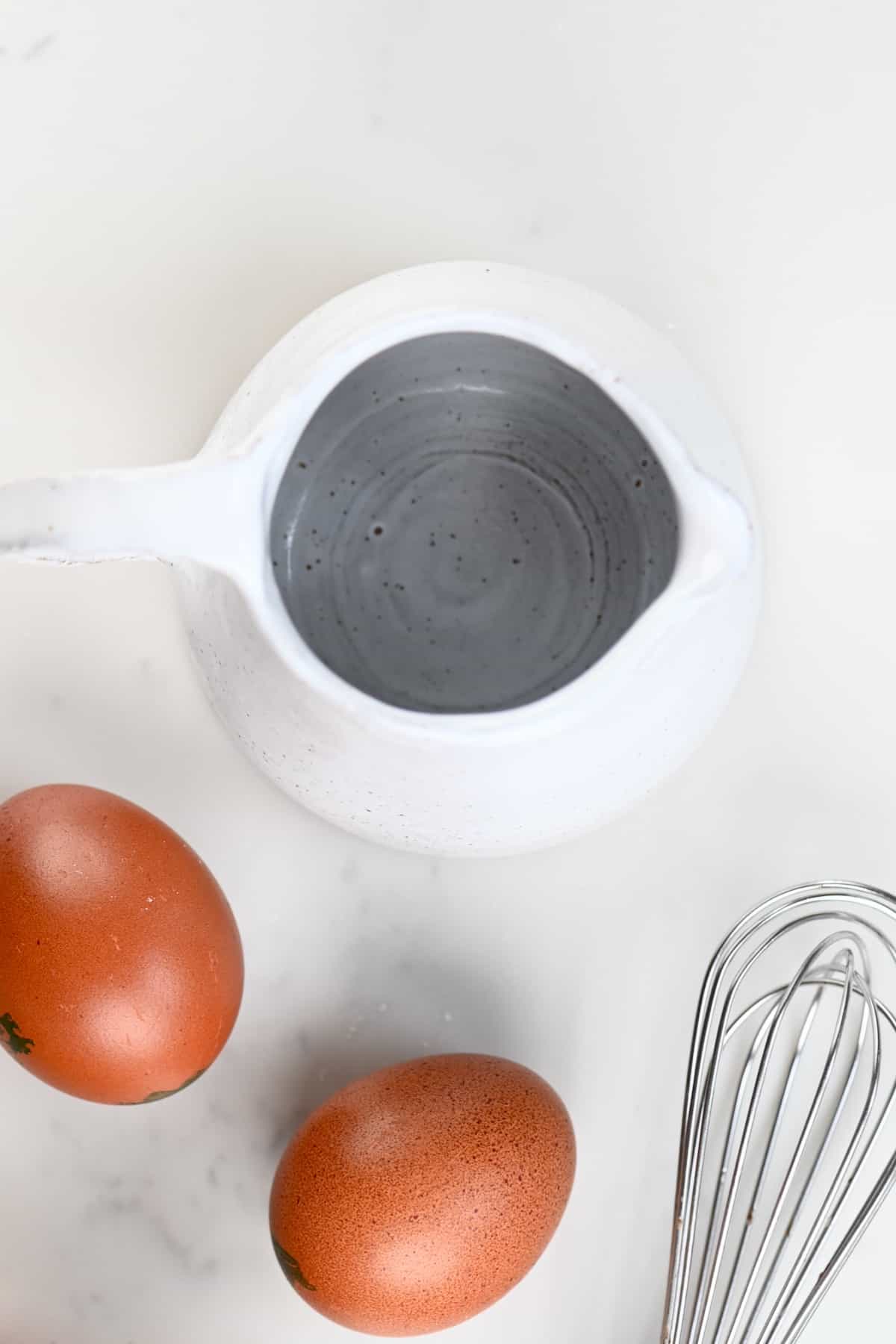
Next, it’s time to add the eggs to the dough. This is the trickiest part of the entire process as the number of eggs can vary from batch to batch, depending on exactly how much moisture there is in the dough, how big the eggs are, the type of flour used, etc.
Mix in around one egg at a time (1/4 cup) with a wooden spoon or hand mixer. The dough will seem slimy to begin, but keep mixing. Repeat this process until the dough is smooth and glossy.
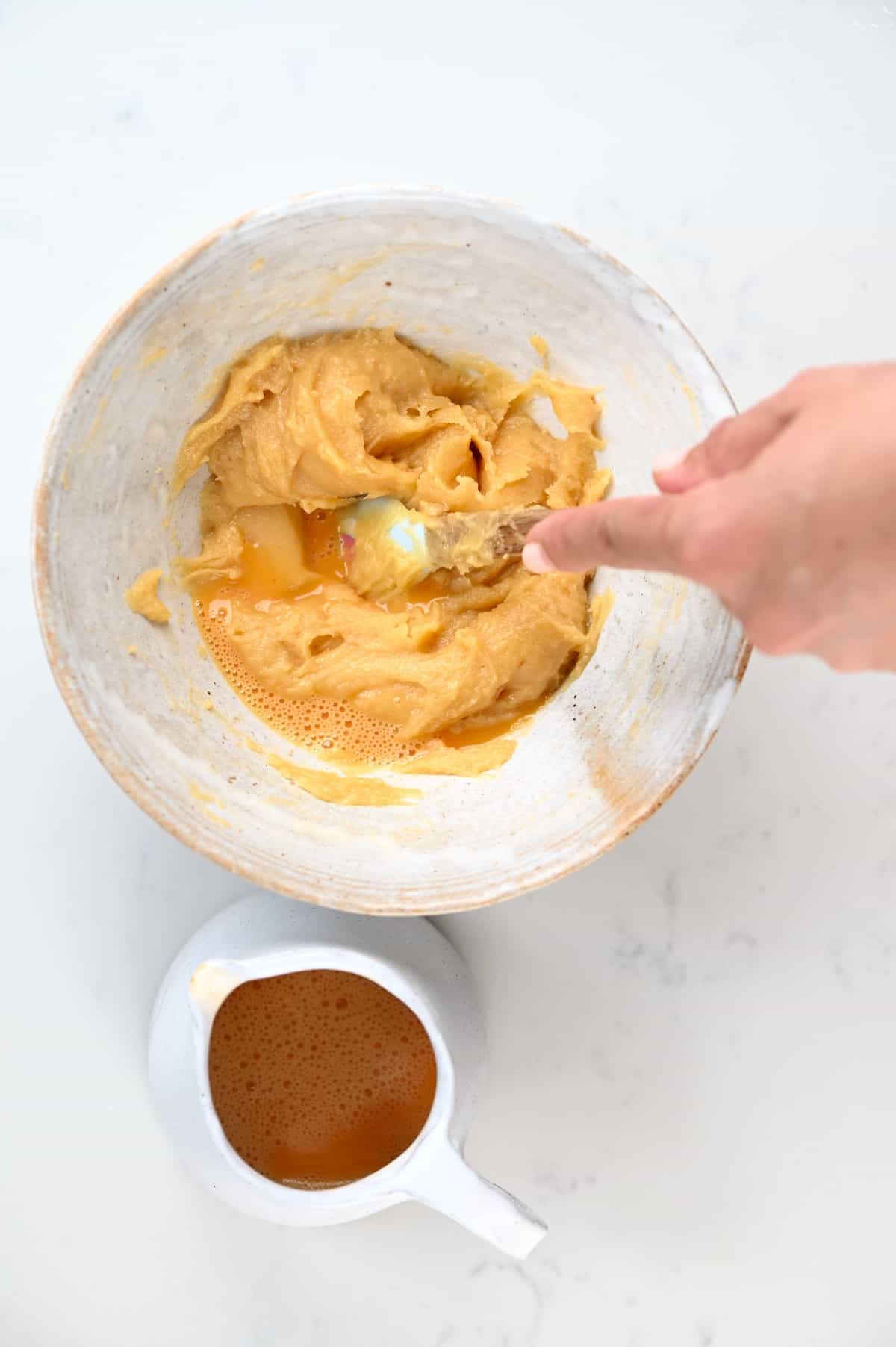
You should be able to run a finger through the dough without it collapsing back in on itself. Your dough is ready!
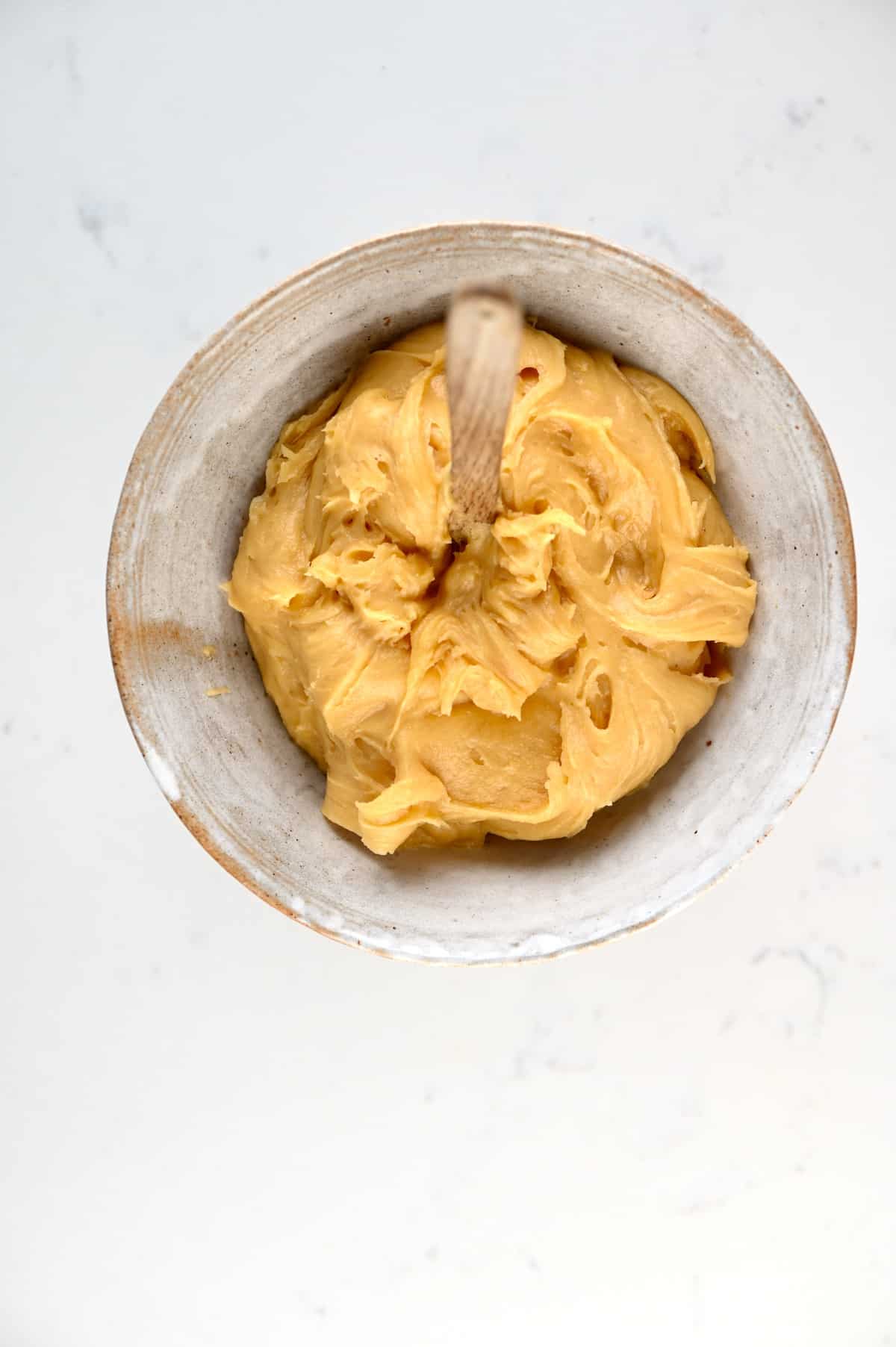
Top Tip: If you have any remaining egg mixture leftover, use it as an egg wash for the choux pastry as It bakes.
To Bake Eclairs and Profiteroles
Preheat the oven to 180ºC/350ºF.
Use a piping/ pastry bag (you can also use a mini ice-cream/cookie scoop for the puffs) to pipe your dough into the desired shape on a parchment paper-lined baking tray.
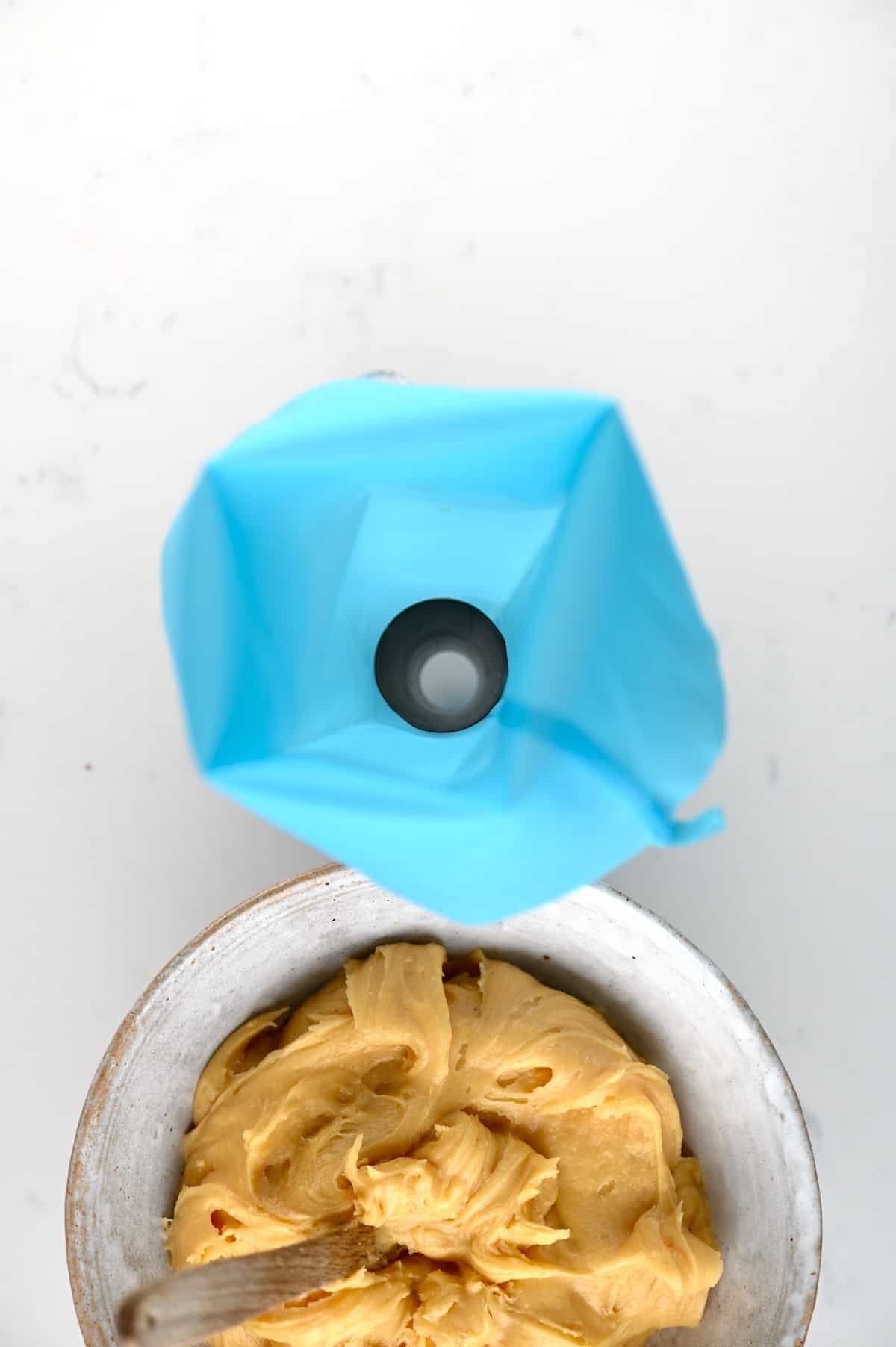
Top Tip: Optionally, dampen the parchment paper with a little water. This will help the pastry to properly rise as it will create extra steam in the oven. Just be careful not to add too much.
For profiteroles/cream puffs: hold the piping bag directly above the sheet and pipe, moving straight up as you go – to avoid extra ripples in the dough. Make them around 4cm/1.5inches round and 2 inches tall and pipe 3-4 inches apart. You should be able to pipe around 20 rounds.
For Eclairs: Pipe 10cm long logs using a round or star-shaped nozzle. Leave 3-4 inches between them. You should be able to pipe around 15 eclairs.
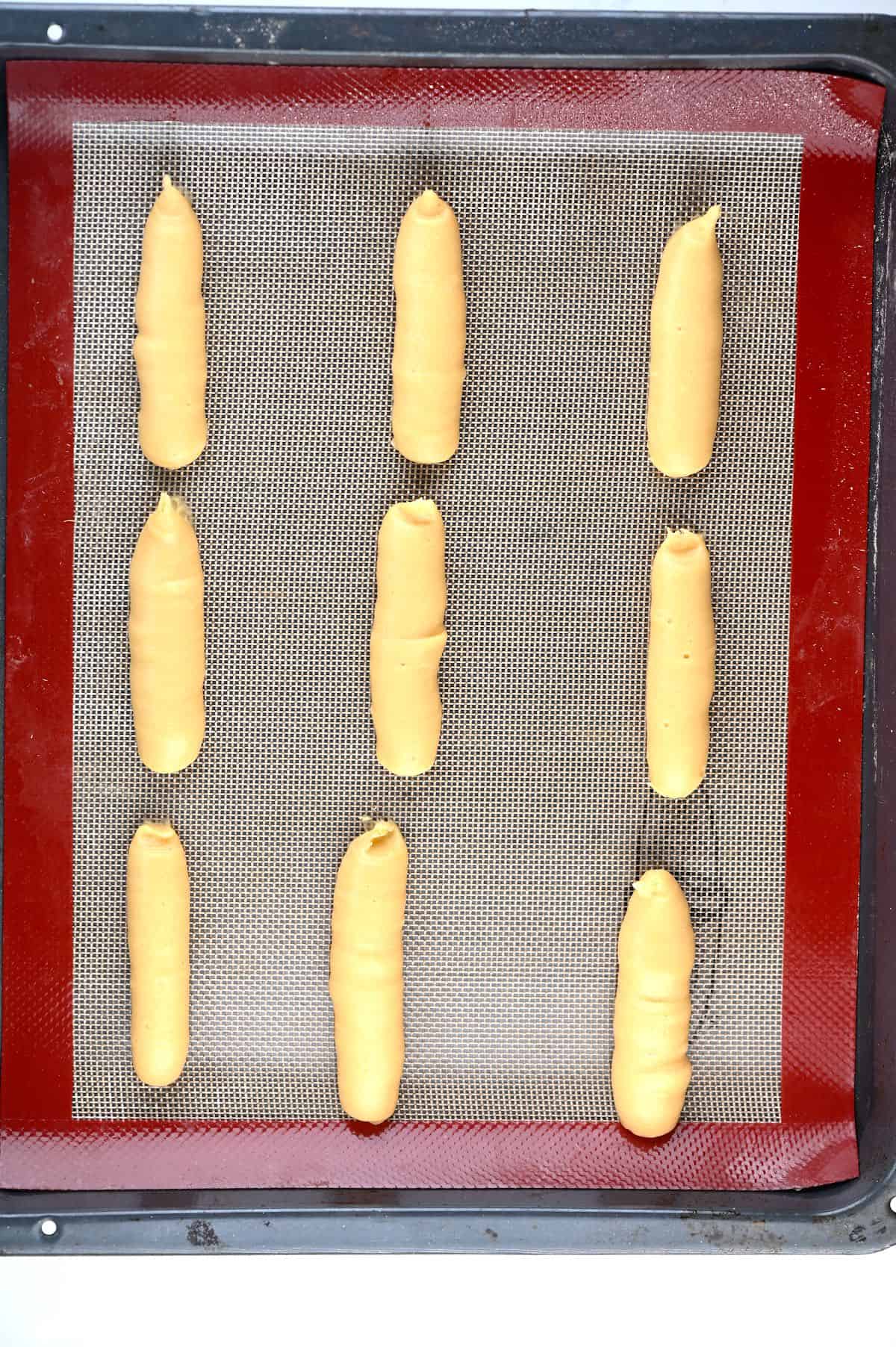
Top Tip: If you’re using piping tips, then Wilton 1A or 2A would work well, though any ½” inch round tip will do.
Once piped, use a water-dampened finger to smooth down and peaks on the dough (as these can burn in the oven and won’t look nice). Then brush the pastries with egg wash.
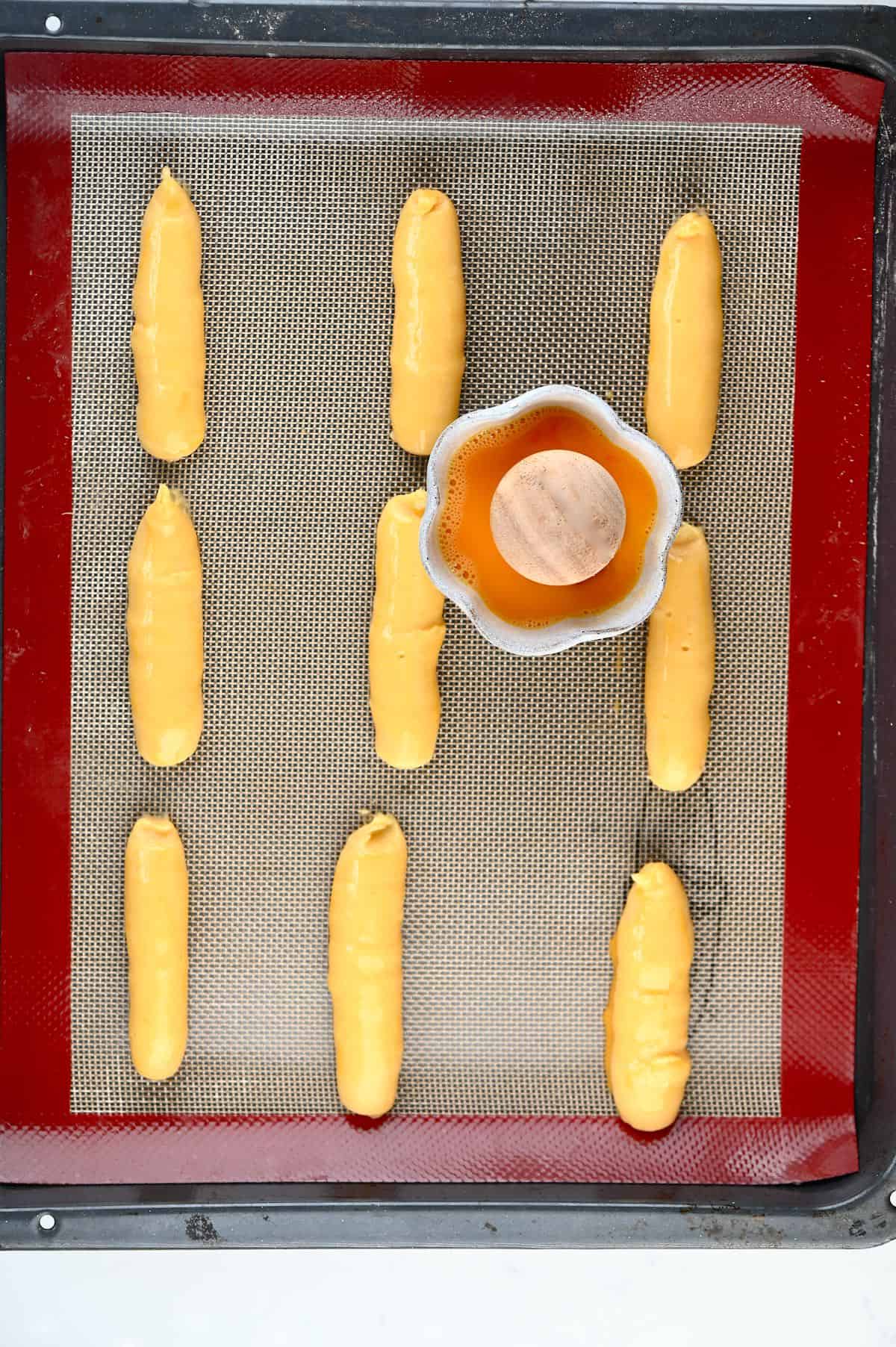
Bake the pastry in the oven until light golden brown and crispy. For me, this takes around 26 minutes for the profiteroles and 28 minutes for the eclairs. Make sure to NEVER open the oven door during the baking process, or you will release the steam inside and cause the dough to collapse.
Once ready, transfer the pastries on to a cooling rack and allow them to fully cool down before filling and decorating.
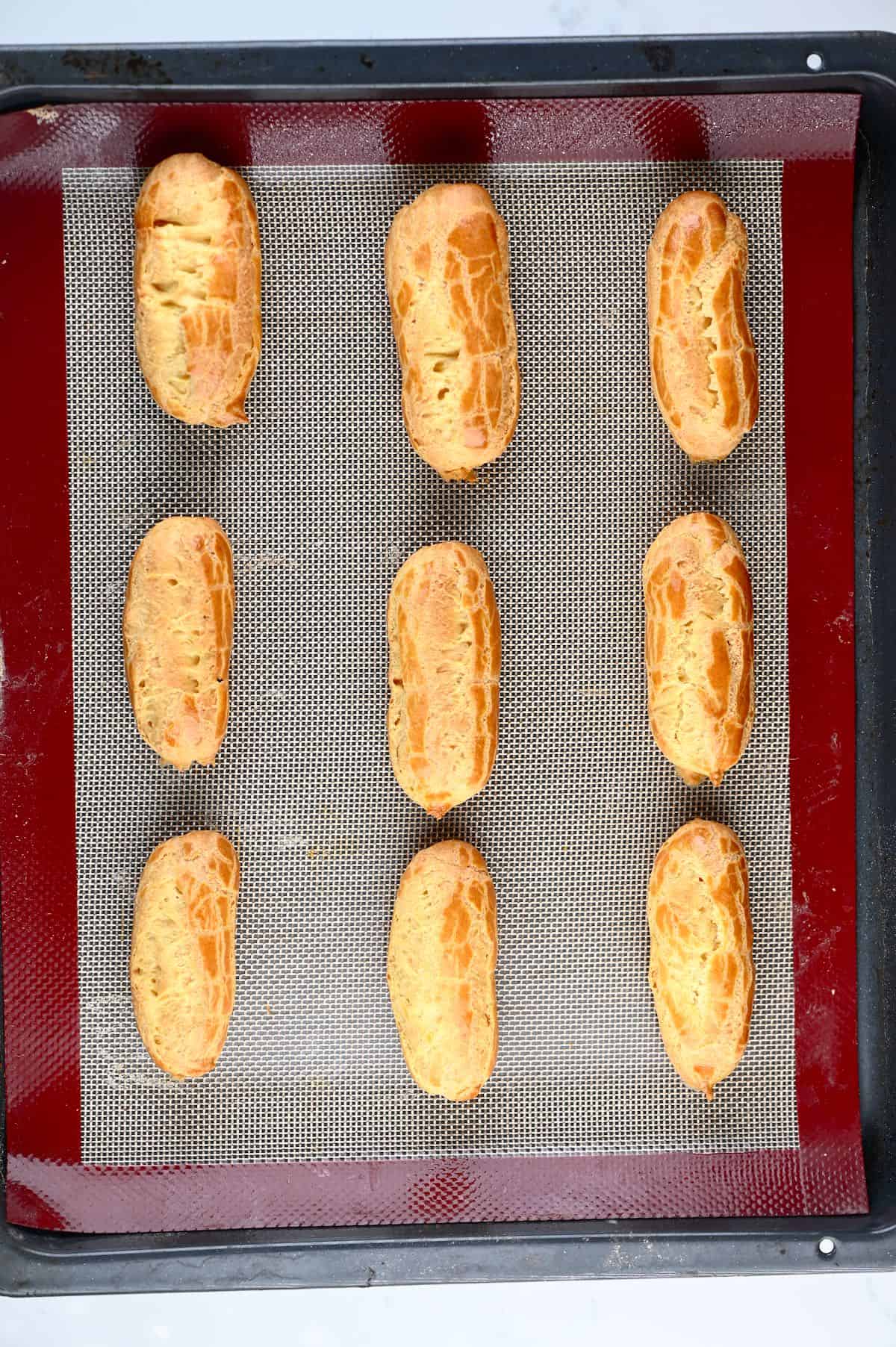
Top Tip: I haven’t found it necessary for this recipe. However, some people like to prick the pastries with a toothpick in the last few minutes of baking/ as soon as removing from the oven. This allows the excess moisture inside the pastry to release so that they dry out more and become crispier/sturdier.
How To Make Ahead & Store
Prepared choux pastry can be covered and chilled for up to three days in the fridge or two-three months in the freezer. Simply thaw the dough before using it.
Once baked, the empty choux buns/ eclairs can be frozen as well. Freeze in a single layer on a tray before transferring to a ziplock bag for up to three months. To use them, allow the pastry to thaw in the fridge and then bake in the oven for 5-10 minutes at 300°F/150°C to crisp up again.
Recipe Notes & FAQs
- Why has my pastry collapsed? There are several reasons this could happen, including the dough being too runny or removing them from the oven too early/ opening the oven door too early. If the dough is too wet, then AVOID adding raw flour to the dough. Instead, make another ½ batch of dough at the right consistency and allow it to cool, then add, bit by bit, to the runny dough until the correct consistency is achieved.
- Why does my pastry have lots of cracks/ is shaped oddly? This is usually down to two issues- the pastry has lumps in it, or it was baked at too high of a temperature. Make sure you sift the flour into the dough and that the salt/sugar fully dissolve to avoid this.
- If you have issues with the pastry collapsing after removing it from the oven once baked, you can allow it to cool for a while in the oven before removing. Leave the door cracked open slightly.
- You can use all water instead of a mixture of milk ad water, though this will lead to less flavorsome pastry.
- Eclairs are more likely to collapse than puffs. To avoid this, you can use bread flour for eclairs an AP flour for profiteroles/puffs.
- Make a savory version by adding cheese to the dough. Around ½-1 cup of cheese added after the eggs and mixed in will be more than enough.
- You can substitute the water with other more flavorful liquids—for example, vegetable stock, fruit or vegetable juice, etc.
- Feel free to flavor the dough with herbs and spices.
- For extra crisp pastries, sift some confectioners sugar over the dough before baking. This will inhibit the puffing slightly but will make for crisper, sturdier pastry.
Related Recipes
- The Ultimate Vanilla Custard
- Chocolate Pastry Cream (Creme Patissiere)
- Easy Homemade Chocolate Syrup
- Simple Homemade Strawberry Syrup (3 Ways)
- How To Make Homemade Coconut Condensed Milk
- How To Make Coconut Whipped Cream
- Traditional Caramel Ice Cream
- Homemade Pistachio Baklava (Pistachio Baklawa)
If you try this choux pastry recipe, then let me know your thoughts and any questions in the comments. Also, feel free to tag me in your recreations @AlphaFoodie.
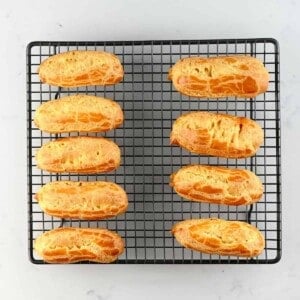
How To Make Choux Pastry (Pâte à Choux)
Ingredients
- 1⅓ cup white flour sifted
- 4 eggs
- ½ cup butter unsalted
- ½ cup water
- ½ cup milk
- 1 tsp cane sugar
- ½ tsp salt
- 1 tsp vanilla extract optional
- 1 egg for egg wash
Instructions
- In a large saucepan, add the water, milk, butter, sugar, and salt. Heat them up over medium heat, occasionally stirring, until the butter is melted and the sugar/salt are completely dissolved (otherwise your pastry can end up cracking).Top Tip: It’s best to chop the butter up into tiny pieces so that it melts quicker. The aim is to melt the butter and dissolve the sugar/salt before the mixture starts boiling so that you don’t allow too much of the water to evaporate, which can negatively affect your dough as you’re losing steam.
- Once the butter is melted, bring the mixture to a boil over high heat and then remove from the heat, keeping it on.
- Add the sifted flour to the mixture in one go and beat until smooth and lump-free, then place the pot back on the heat and continue to mix until mixture forms a cohesive dough that pulls away cleanly from the sides of the pan, at that point stop beating the mixture immediately.Top Tip: There are several things to look out for to know that it’s ready. There is often a thin film/crust of mixture on the bottom of the pan. Another test is the ‘spoon test.’ Place a spoon in the center of the dough. If it stays in place, upright, then it’s ready. If it falls over, then your dough is too liquidy.
- Once ready, transfer the dough to a bowl and set aside for 10 minutes to allow it to cool.Top Tip: It’s easiest to do this by spreading it out across a wide surface space to cool faster. You can either spread it out on the inside of the bowl or over a wide baking sheet.
- As the dough cools, thoroughly beat the eggs.
- Next, it’s time to add the eggs to the dough. This is the trickiest part of the entire process as the number of eggs can vary from batch to batch, depending on exactly how much moisture there is in the dough, how big the eggs are, the type of flour used, etc.
- Mix in around one egg at a time (1/4 cup) with a wooden spoon or hand mixer. The dough will seem slimy to begin, but keep mixing. Repeat this process until the dough is smooth and glossy.
- You should be able to run a finger through the dough without it collapsing back in on itself. Your dough is ready!Top Tip: If you have any remaining egg mixture leftover, use it as an egg wash for the choux pastry as It bakes.
To Bake Eclairs and Profiteroles
- Preheat the oven to 180ºC/350ºF.
- Use a piping/ pastry bag (you can also use a mini ice-cream/cookie scoop for the puffs) to pipe your dough into the desired shape on a parchment paper-lined baking tray.]Top Tip: Optionally, dampen the parchment paper with a little water. This will help the pastry to properly rise as it will create extra steam in the oven. Just be careful not to add too much.
- For profiteroles/cream puffs: hold the piping bag directly above the sheet and pipe, moving straight up as you go – to avoid extra ripples in the dough. Make them around 4cm/1.5inches round and 2 inches tall and pipe 3-4 inches apart. You should be able to pipe around 15-20 rounds.For Eclairs: Pipe 10cm long logs using a round or star-shaped nozzle. Leave 3-4 inches between them. You should be able to pipe around 8 large eclairs (or 12 smaller).Top Tip: If you’re using piping tips, then Wilton 1A or 2A would work well, though any ½” inch round tip will do.
- Once piped, use a water-dampened finger to smooth down and peaks on the dough (as these can burn in the oven and won’t look nice). Then brush the pastries with egg wash.
- Bake the pastry in the oven until light golden brown and crispy. For me, this takes around 26 minutes for the profiteroles and 28 minutes for the eclairs. Make sure to NEVER open the oven door during the baking process, or you will release the steam inside and cause the dough to collapse.
- Once ready, transfer the pastries on to a cooling rack and allow them to fully cool down before filling and decorating (like I have with these Chocolate Profiteroles).Top Tip: I haven’t found it necessary for this recipe. However, some people like to prick the pastries with a toothpick in the last few minutes of baking/ as soon as removing from the oven. This allows the excess moisture inside the pastry to release so that they dry out more and become crispier/sturdier.
How To Make Ahead & Store
- Prepared choux pastry can be covered and chilled for up to three days in the fridge or two-three months in the freezer. Simply thaw the dough before using it.
- Once baked, the empty choux buns/eclairs can be frozen as well. Freeze in a single layer on a tray before transferring to a ziplock bag for up to three months. To use them, allow the pastry to thaw in the fridge and then bake in the oven for 5-10 minutes at 300°F/150°C to crisp up again.
Notes
- Why has my pastry collapsed? There are several reasons this could happen, including the dough being too runny or removing them from the oven too early/ opening the oven door too early. If the dough is too wet, then AVOID adding raw flour to the dough. Instead, make another ½ batch of dough at the right consistency and allow it to cool, then add, bit by bit, to the runny dough until the correct consistency is achieved.
- Why does my pastry have lots of cracks/is shaped oddly? This is usually down to two issues- the pastry has lumps in it, or it was baked at too high of a temperature. Make sure you sift the flour into the dough and that the salt/sugar fully dissolve to avoid this.
- If you have issues with the pastry collapsing after removing it from the oven once baked, you can allow it to cool for a while in the oven before removing it. Leave the door cracked open slightly.
- You can use all water instead of a mixture of milk ad water, though this will lead to less flavorsome pastry.
- Eclairs are more likely to collapse than puffs. To avoid this, you can use bread flour for eclairs an AP flour for profiteroles/puffs.
- Make a savory version by adding cheese to the dough. Around ½-1 cup of cheese added after the eggs and mixed in will be more than enough.
- You can substitute the water with other more flavorful liquids—for example, vegetable stock, fruit or vegetable juice, etc.
- Feel free to flavor the dough with herbs and spices.
- For extra crisp pastries, sift some confectioners sugar over the dough before baking. This will inhibit the puffing slightly but will make for crisper, sturdier pastry.
Nutrition
Nutrition information is automatically calculated, so should only be used as an approximation.


